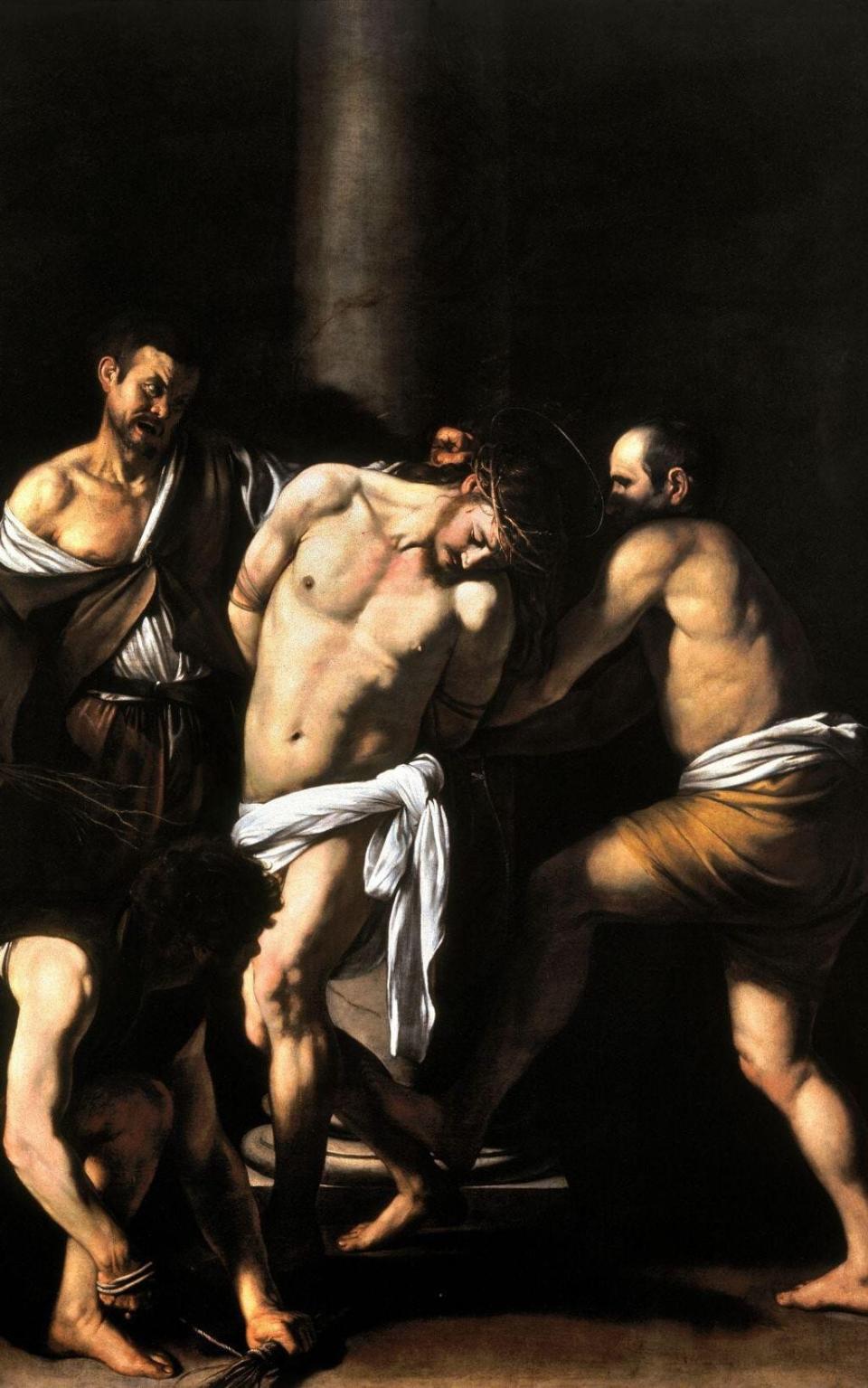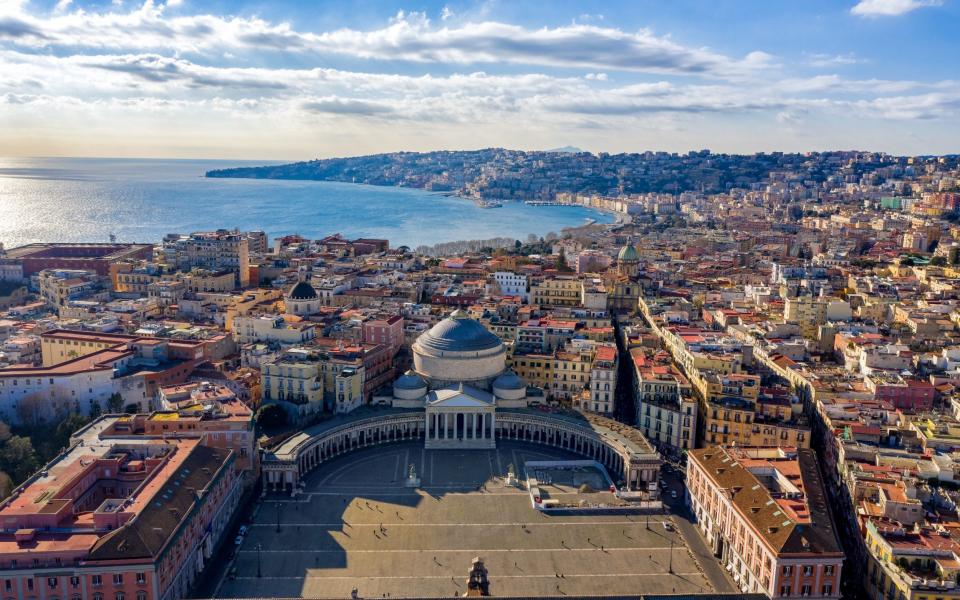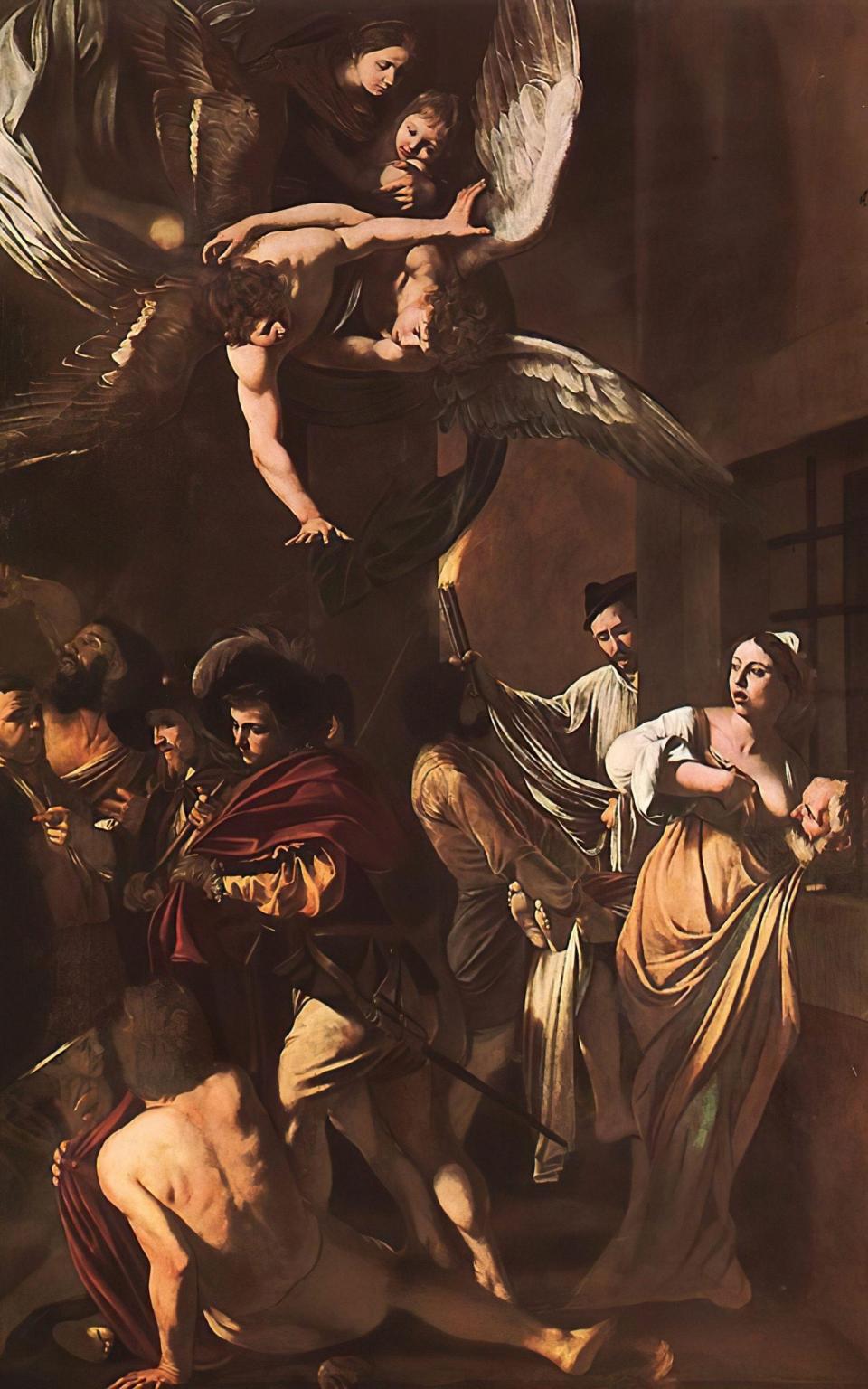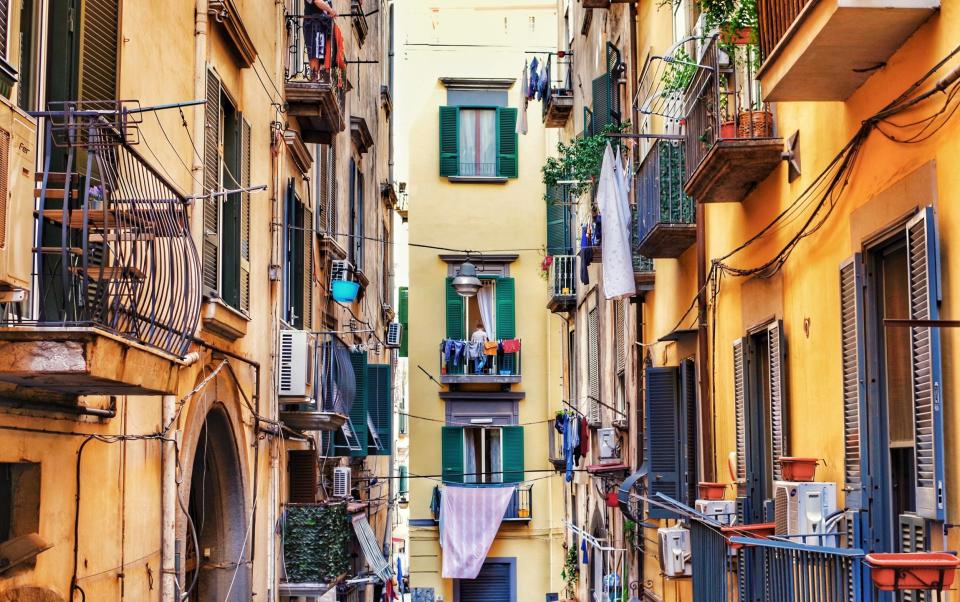“See Naples and die.” In other words, this wonderful city is so beautiful that the experience of visiting it can’t be beat. This is an old adage probably coined by the tourist board of medieval Naples. But when you stop to take in the view from a terrace or balcony, you can see their point. The setting is magnificent. The great bay glistens in the Mediterranean sun, the long arm of the Sorrento peninsula stretching towards Capri, and the shadowy mass of Vesuvius stretching to the south. Sometimes covered in snow, sometimes smoldering, it always adds a sense of volcanic drama to the scene and, let’s face it, a slight air of menace and excitement.
But there has always been an unfortunate truth about Naples being associated with death. The city may have a grand and airy appearance, but it has long had a run-down side. Today this situation is largely connected with the shady dealings of the Camorra (Neapolitan mafia), which is almost invisible to tourists. But one visitor got on Naples’ bad side and died soon after: the artist Caravaggio.


Crowded, busy and angry
When he arrived here from Rome in the autumn of 1606, the city was in the midst of transformation. Its economy, three times larger than Rome’s, was growing rapidly under Spanish rule and attracting large numbers of immigrants. The ban on building outside the walls meant that houses were squeezed into a grid of even narrower passages, rising six or seven stories high, twice as high as in other Italian cities. This network of narrow streets still characterizes today the historic center of this region, the most crowded, densest and sharpest of Italy’s mainland cities.
Caravaggio was welcomed in one of the grand palaces of Via Toledo (then and now the main street of Naples). But he also felt completely at home in the back streets. He had already narrowly escaped Rome after killing his love rival in a fight (he was apparently trying to cut off his genitals). This was typical of a man of unbalanced temperament who enjoyed the city’s taverns and brothels as much as he enjoyed the court society of his powerful patrons. But even they couldn’t protect him from a murder charge, and he was forced to head south to avoid arrest.


Neapolitan high society disregarded his reputation as a street fighter and were dazzled by his talent. He was the most famous painter of Italy, a country where art was extremely socially and spiritually important. I can’t help but think of the similarities with Diego Maradona in 1984. Another troubled and unpredictable virtuoso, he had just left Barcelona after headbutting his opponent in the cup final. But the Neapolitans did not care; What they desired was his football genius, and they got it in return. He soon led Napoli to their first ever Italian championship and, 40 years later, his image still dominates the city’s souvenir stalls.
Four hundred years later, only three paintings by Caravaggio remain in the city. But these are three of his most brilliant paintings, and they give a fascinating insight into his time here. Indeed, the first painting he painted upon arrival was Seven Acts of Mercy, is a direct evocation of the crowded and threatening atmosphere of the Neapolitan streets. This work, which currently belongs to the charity that performs this work, is a claustrophobic nightscape set in a pitch-dark alley. A single burning torch illuminates a confusing array of figures. One man has fallen to the ground, and another, clearly dead, is being carried away. The Virgin and child flying above look on anxiously.


At first glance this looks like the result of a street fight, like the one Caravaggio left in Rome a few weeks ago. In reality, this is a rather extraordinary morality tableau in which seven actions (including burying the dead, clothing the naked, and sheltering the homeless) are summarized in a single tableau. But since Caravaggio loved to make his religious scenes real and relevant, this also represents the neediness and vulnerability of those living on the city streets.
The power of light and shadow
There is pain and compassion in this painting, which is perhaps the most powerful painting he has ever painted. The scourging of Jesus. It is a display of light and shadow, threat and tolerance, made by an artist at the height of his powers, just before he left for Malta in the summer of 1607.


He returned two years later; But his past was catching up with him. As she was leaving a brothel just off Via Toledo, her face was slashed by an unidentified assailant, possibly possessed by an old enemy. Afterwards, undoubtedly in great pain from his wounds, he painted his last painting. Martyrdom of St. UrsulaIt is also in the Naples collection. This also includes a brutal attack; Piercing the saint’s chest with an arrow at close range. Behind him, in the shadows, there is a breath of pain and terror that distorts the artist’s pale features. This is our last look at Caravaggio. While trying to return to Rome a few weeks later, he died of a fever possibly related to his wounds.
Caravaggio saw Naples and died. But he also adorned it with some of the most powerful and evocative works of art ever created.


Fundamentals
Romeo Napoli (00 39 081 017 5001; theromeocollection.com) doubles from £511 per night.
Wizz Air (wizzair.com), easyJet (easyjet.com), British Airways (ba.com) and Ryanair (ryanair.com) fly to Naples from UK airports, with return fares starting from £48.
The last Caravaggio will be at the National Gallery from 18 April to 21 July. Admission is free (nationalgallery.org.uk).